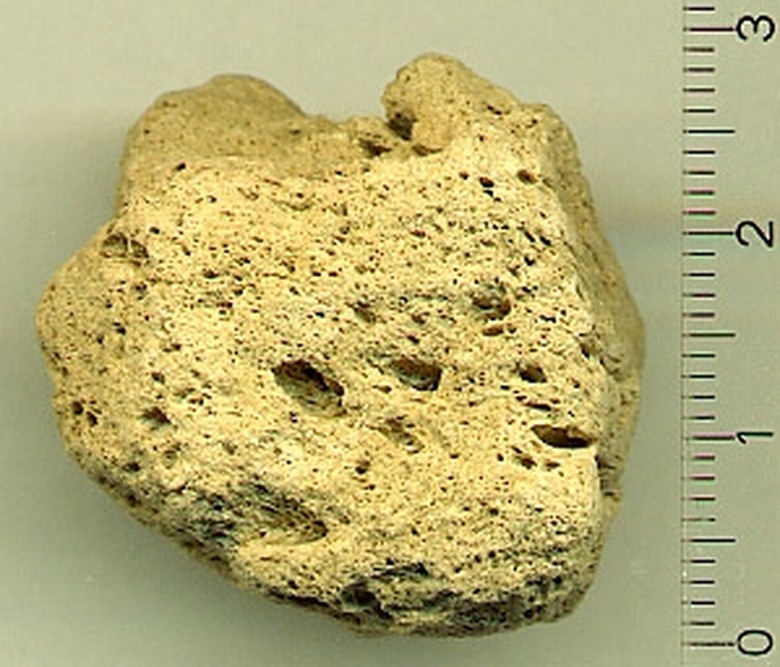How Is Pumice Formed?
Pumice, Volcanoes and Density
Pumice, Volcanoes and Density
Pumice is a unique rock, noted for its light weight and low density (dry pumice can float in water). It is commonly used in cement, concrete and breeze blocks and as an abrasive in polishes, pencil erasers, exfoliants and to produce stone-washed jeans. Pumice is also used to remove dry skin from the bottom of the foot during the pedicure process at some beauty salons. Pumice is a type of igneous rock full of bubble holes and can be formed when lava comes into contact with water, cooling rapidly.
Formation
Formation
Pumice is formed by lava coming into contact with water. This occurs most often with volcanoes near or under water. When the hot magma comes into contact with the water, rapid cooling and rapid de-pressurization creates bubbles by lowering the boiling point of lava. The cooling of the rock below the rock's melting point means that when the rock changes almost immediately to a solid after coming into contact with the water, the bubbles are trapped inside. Because pumice is igneous, it is at times glass-like, and the bubbles are trapped between the thin translucent bubble walls of rock.
Volcanic Gases and Density
Volcanic Gases and Density
Depending on the amount of volcanic gases coming from the lava before it cools rapidly, either pumice or scoria can be created. Pumice is a lighter color, has a porosity near 90 percent and is less dense; scoria is denser with larger bubbles and thicker bubble walls and sinks rapidly unlike pumice, which initially floats. If there are large amounts of gas present, pumice is created; when there is less gas, associated with less viscous magma, scoria is formed. Pumice can be formed rapidly and, in the past, large pumice rafts have been created from underwater volcanic eruptions like during the volcanic activity near Tonga in 2006.
Cite This Article
MLA
Fitzsimmons, Collin. "How Is Pumice Formed?" sciencing.com, https://www.sciencing.com/pumice-formed-5232410/. 24 April 2017.
APA
Fitzsimmons, Collin. (2017, April 24). How Is Pumice Formed?. sciencing.com. Retrieved from https://www.sciencing.com/pumice-formed-5232410/
Chicago
Fitzsimmons, Collin. How Is Pumice Formed? last modified March 24, 2022. https://www.sciencing.com/pumice-formed-5232410/
